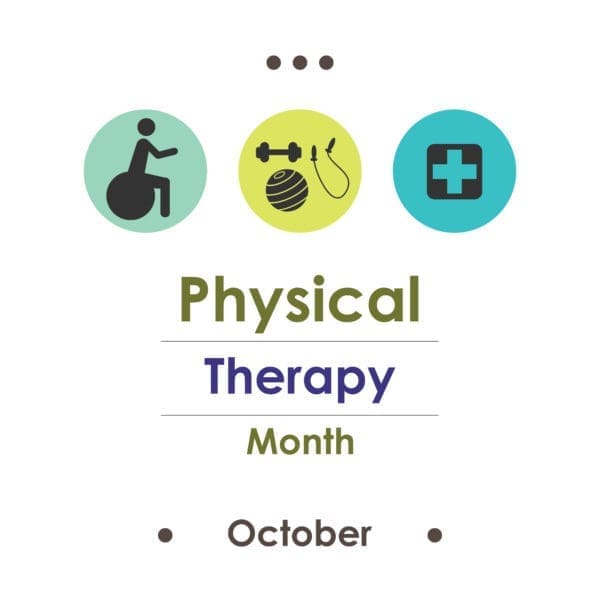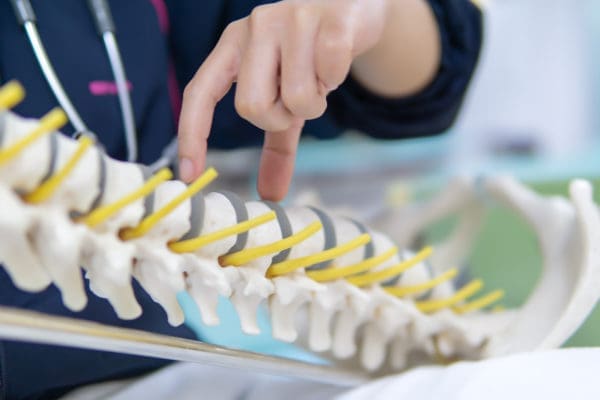It’s funny how the power of two little words can be totally underestimated: “physical therapy.” It may not seem overly impressive as a form of healthcare. It’s physical, so it requires movement of your body, and it’s therapy, so it’s a deliberate process that requires consistency. But the reality of how critically significant physical therapy can be to living a pain-free life can be staggering, including its inclusion on a short list of viable solutions to the opioid crisis. To honor and promote the benefits of physical therapy, the American Physical Therapy Association is celebrating National Physical Therapy Month throughout the month of October.
Solving chronic pain problems
Physical therapy is more than a craft or a healthcare approach. It’s a “dynamic profession with an established theoretical and scientific basis for therapeutic interventions capable of restoring, maintaining, and promoting optimal physical function” Those in the field may work both in private practice or as part of “multidisciplinary healthcare teams to enhance the health, well-being, and quality of life of their patients, who present with a wide range of conditions including those that commonly cause pain.”
Approximately 1/3 of Americans live with chronic pain and many treat it with prescribed opioids. Many also become dependent on those prescriptions though, and efforts to reduce the number who misuse, abuse or overdose are underway. There’s a growing consensus among pain specialists that a low-tech approach focused on lifestyle changes can be more effective. Physical therapy can provide short-term and long-term relief without the use of medication, specifically opioid pain medication.
Of course, opioids can be used properly with positive results, but opioid abuse is so widespread that the Centers for Disease Control and Prevention (CDC) stepped in to try to control this growing epidemic.
Transforming pain management
In honor of National Physical Therapy Month, it’s important to recognize the benefits of physical therapy and its ability to ultimately reduce the needs for opioids to treat chronic pain. Physical therapists can provide relief to those suffering from chronic pain with tests that help to “determine the causes of that pain and to assess its intensity, quality, and temporal and physical characteristics.” This means they can also evaluate pain sufferers for risk factors that can help prevent future pain. This proactive approach considers all sorts of issues that can impact someone’s health like disease history, psychological health and lifestyle habits.
If it works for LeBron James …
For the past 15 years, NBA basketball star LeBron James has been considered an unstoppable force. But the truth is that he has suffered back injuries that had the potential to end his astonishing career.
“James did run into a problem, a serious issue that for the first time truly threatened to derail his career,” ESPN senior writer Brian Windhorst notes. “He had disc issues in his lower back that were zapping his strength and bounce. He didn’t talk about them much, and he tried his best to play through them. But James — video and stats showed — was weakening.”
James sought out a biomechanist who specializes in movement and physical mechanics to help him. For years, James has been working diligently to build his strength the right way, so he can support and protect his spine and back, even in his physically demanding world of professional basketball.
“I just think over time you kind of learn how to grow with it and how to deal with it when certain situations happen,” James said. “It’s very challenging, and you just have to go through it,”
Breaking down how PT works
Speaking from personal experience, when I was living in chronic pain with a herniated L5, I was skeptical about physical therapy. Honestly, I was annoyed that I had to get in my car and drive for 20 minutes to my PT’s office, as that in itself was painful. The cost, the time, the inconvenience – it was easy to make excuses for why I didn’t want to go. Then I went and felt like a fool for doubting it.
Those trained in providing physical therapy have expertise in the inner-workings of the “nervous and musculoskeletal systems through all stages of life (before birth, through childhood, adolescence, and adult, mid-life and into old age). The human body is made up of over 600 muscles that enable our movement, strength and play.”

This all became obvious to me as soon as I meet my physical therapist. He was an acquaintance who came highly recommended. A soon as I walked through the door, he looked at me and knew exactly what was happening to my body. He could tell by my movement – or lack thereof – where I was overcompensating, where my pain resided and what needed to happen to give me relief. And within the 45 minutes of our first session together, I felt that relief.
Patience is a virtue with physical therapy
The most well-designed and most effective physical therapy plan in the world won’t work overnight. That’s just not the nature of the approach. As my physical therapist explained to me years ago, it took my body many years of unfortunate wear and tear to get where it was. That meant it would take time to undo it. Not only did I have to undo what was problematic with my movement but I also had to re-teach my body how to do it correctly.
I understood going in that there were would be good days and bad days with physical therapy. Some days I walked out feeling great; other days I would cry as soon as I got to the privacy of my car. But I knew the plan was working, so I stuck with it. My patience paid off, because my physical therapy kept me out of surgery and I was able to rehabilitate myself back to health.
Treating pain takes teamwork
Take some time this National Physical Therapy Month to explore PT and the relief it can provide you. If it isn’t part of your pain management plan, talk to your healthcare team about making it so. There are a variety of ways you can learn more about PT yourself or help others better understand why it’s so valuable for pain sufferers as well as the health and wellness of our society.

Participate in National Physical Therapy Month by spreading the campaign message:
Pain is personal. Treating pain takes teamwork. #ChoosePT
How will you celebrate National Physical Therapy Month? Have you made physical therapy part of your pain management plan? Tell us about it in the comments below!
Are you on Facebook?
Join our online community by clicking here.
Have a topic related to physical therapy you’d like to see us research and discuss?
Let us know by emailing us at info@painresource.com.



